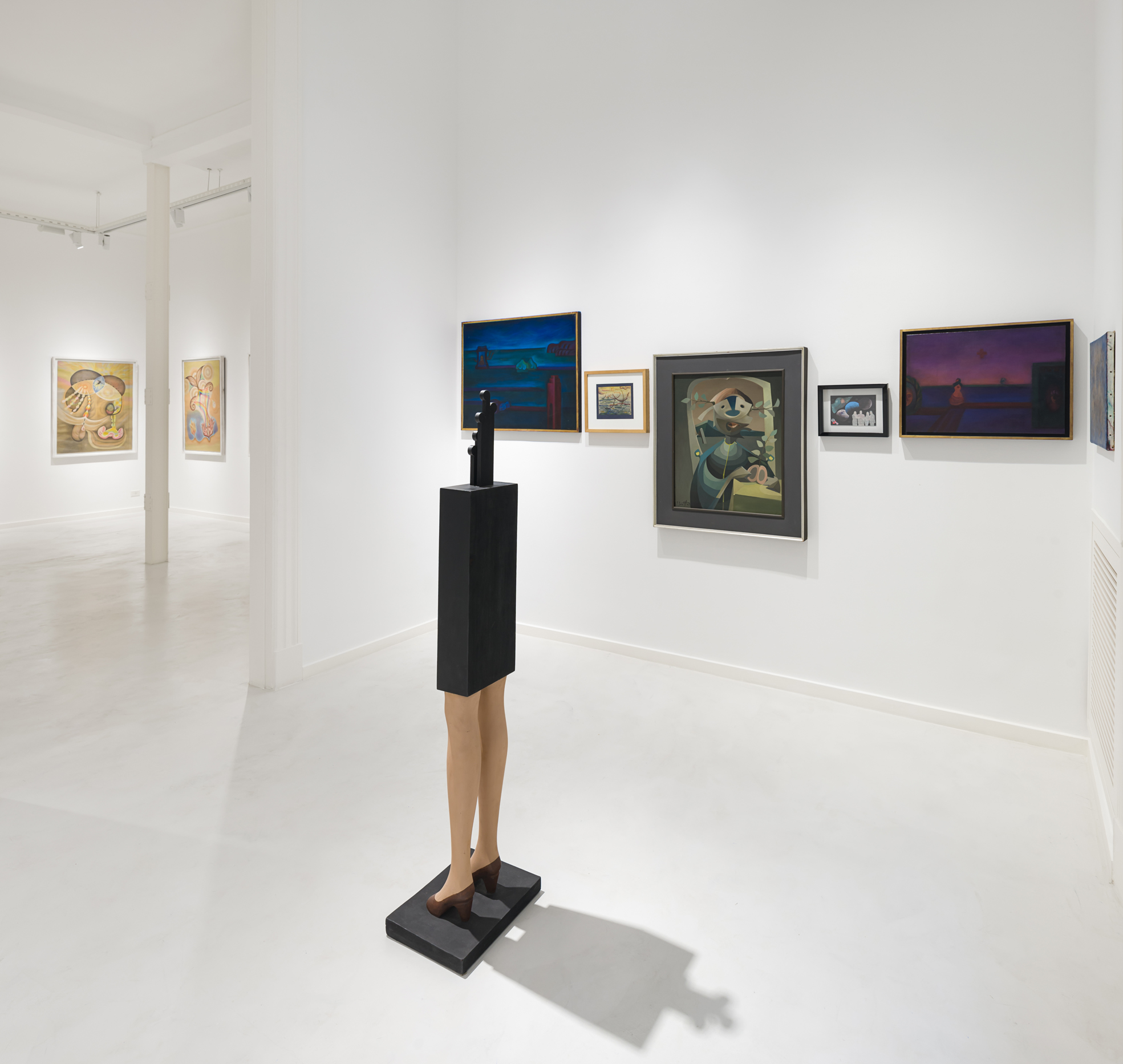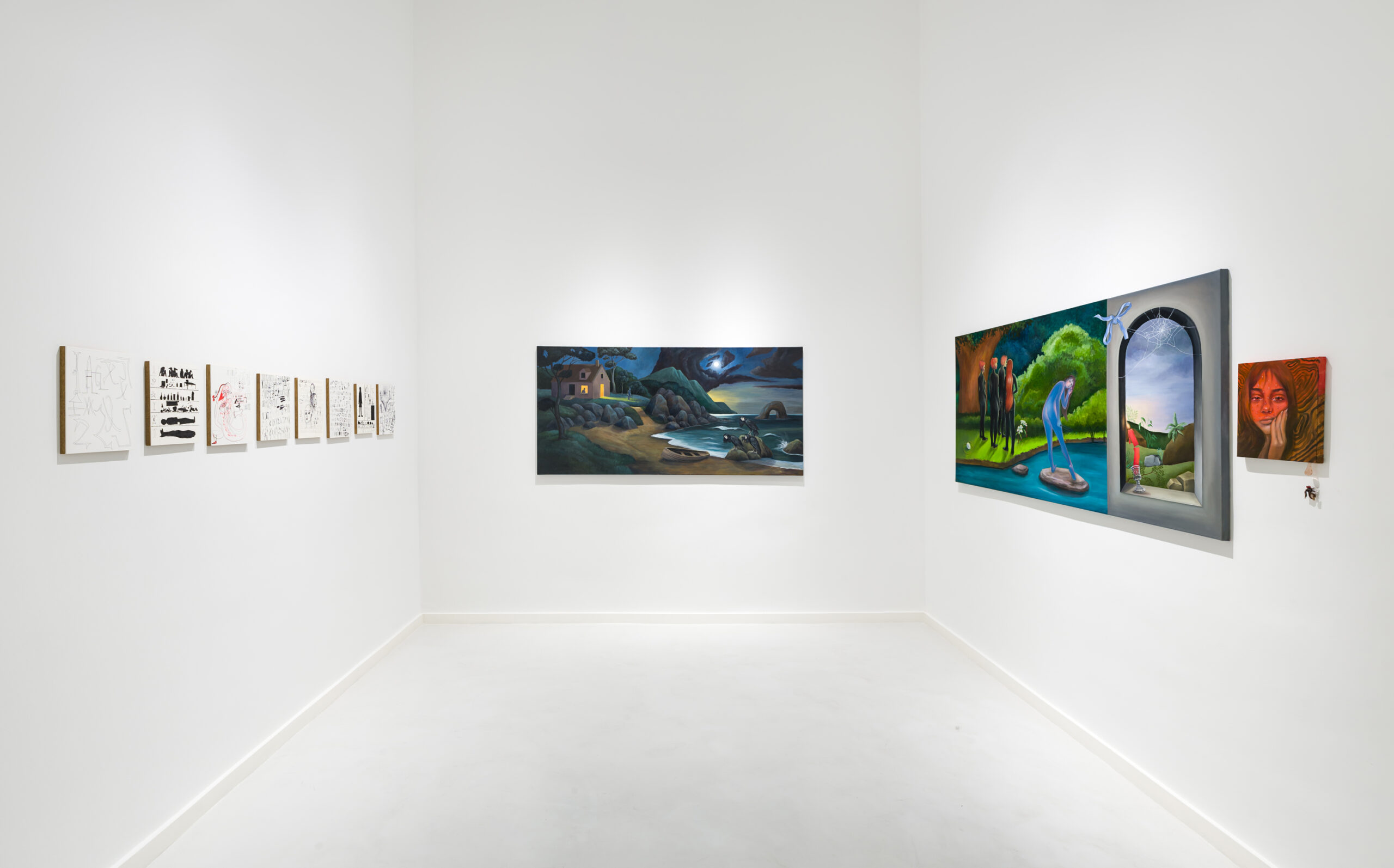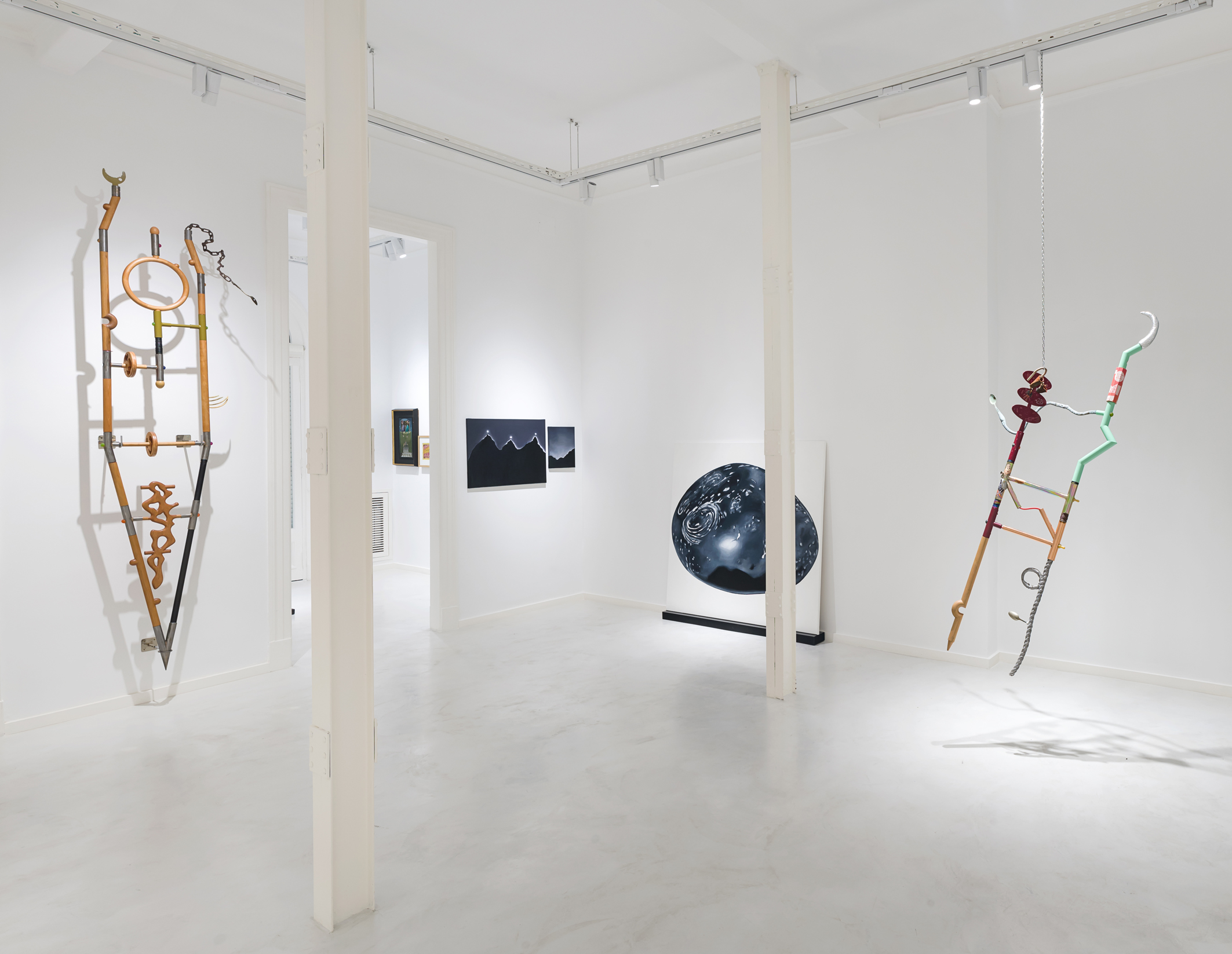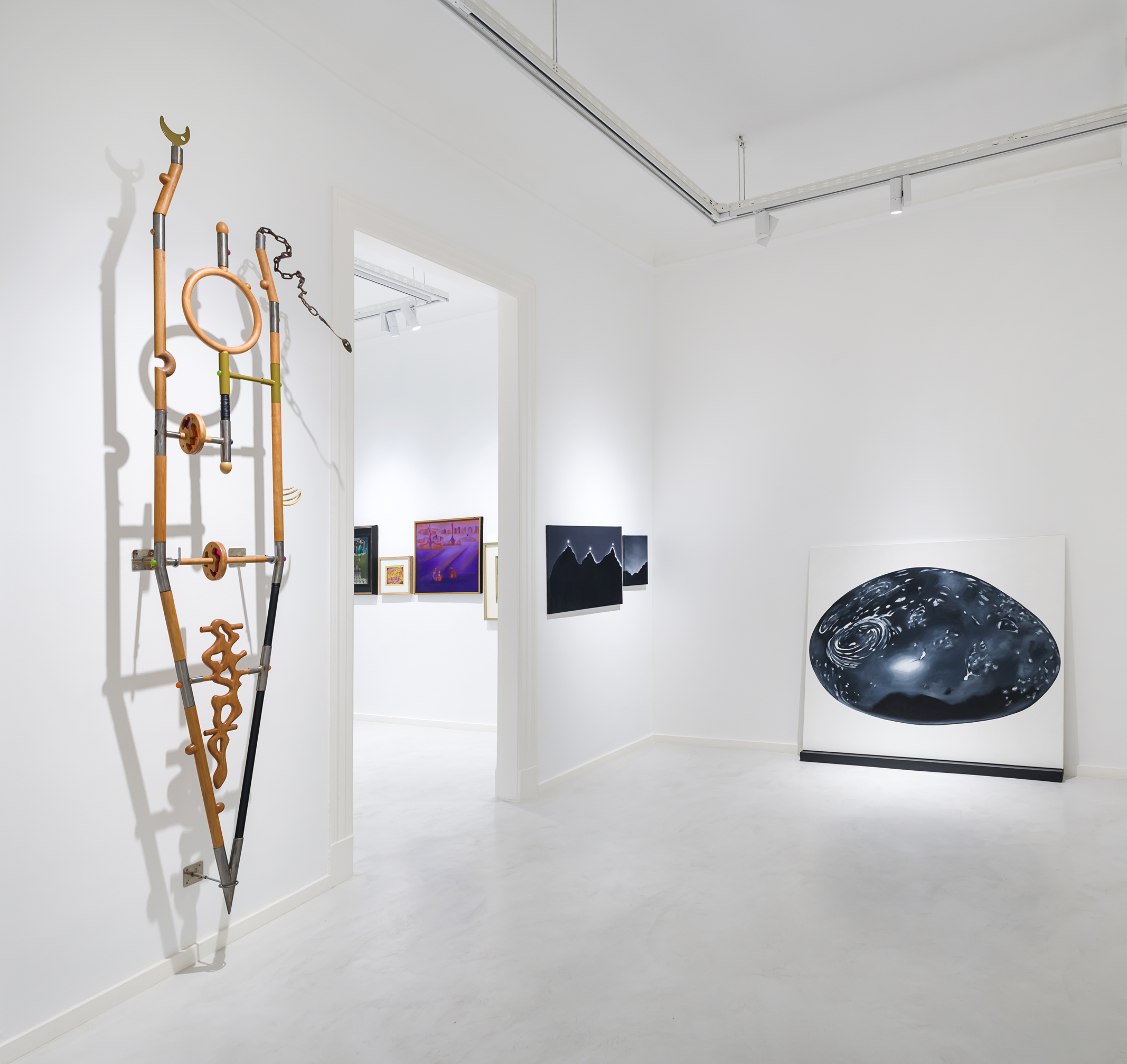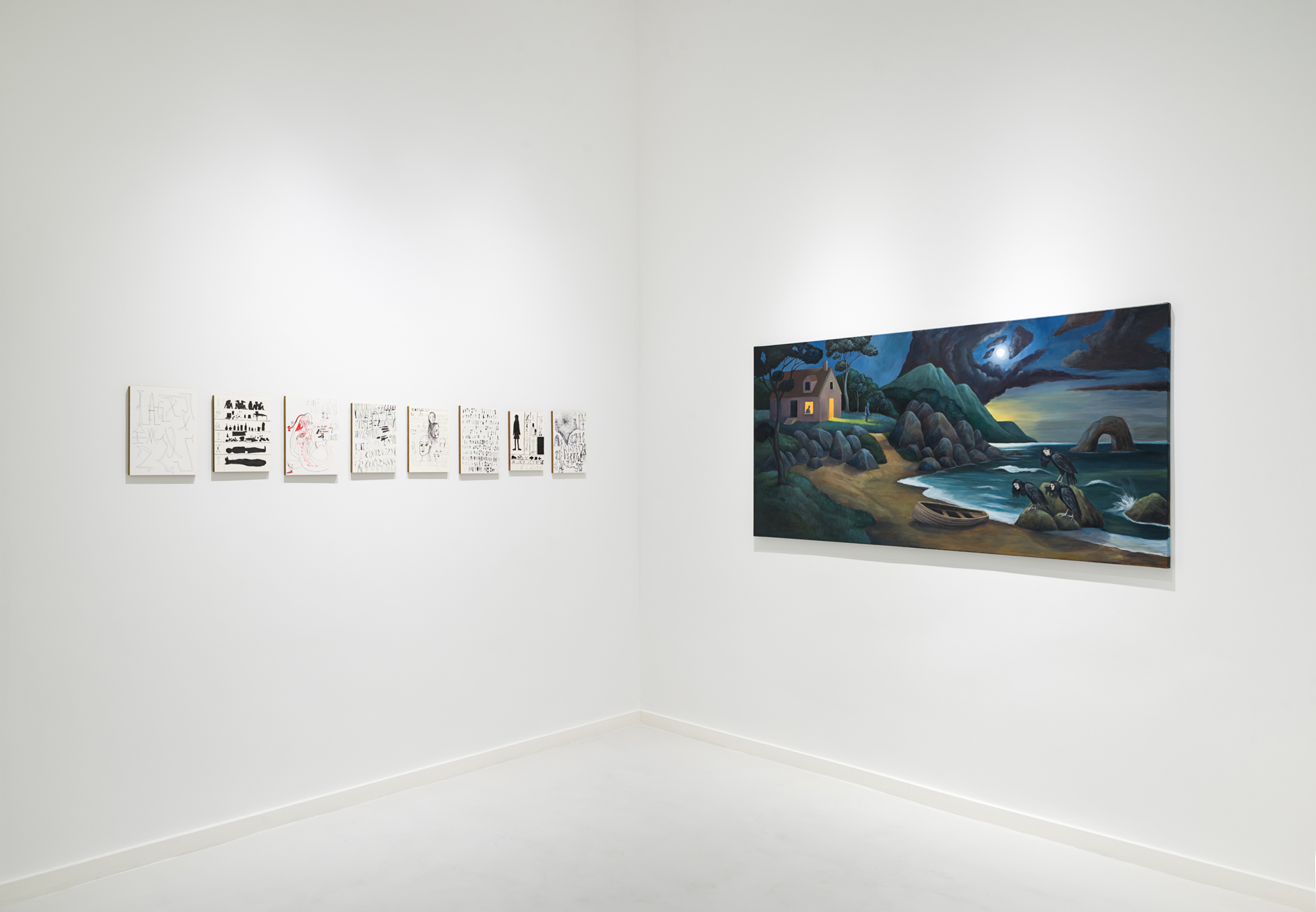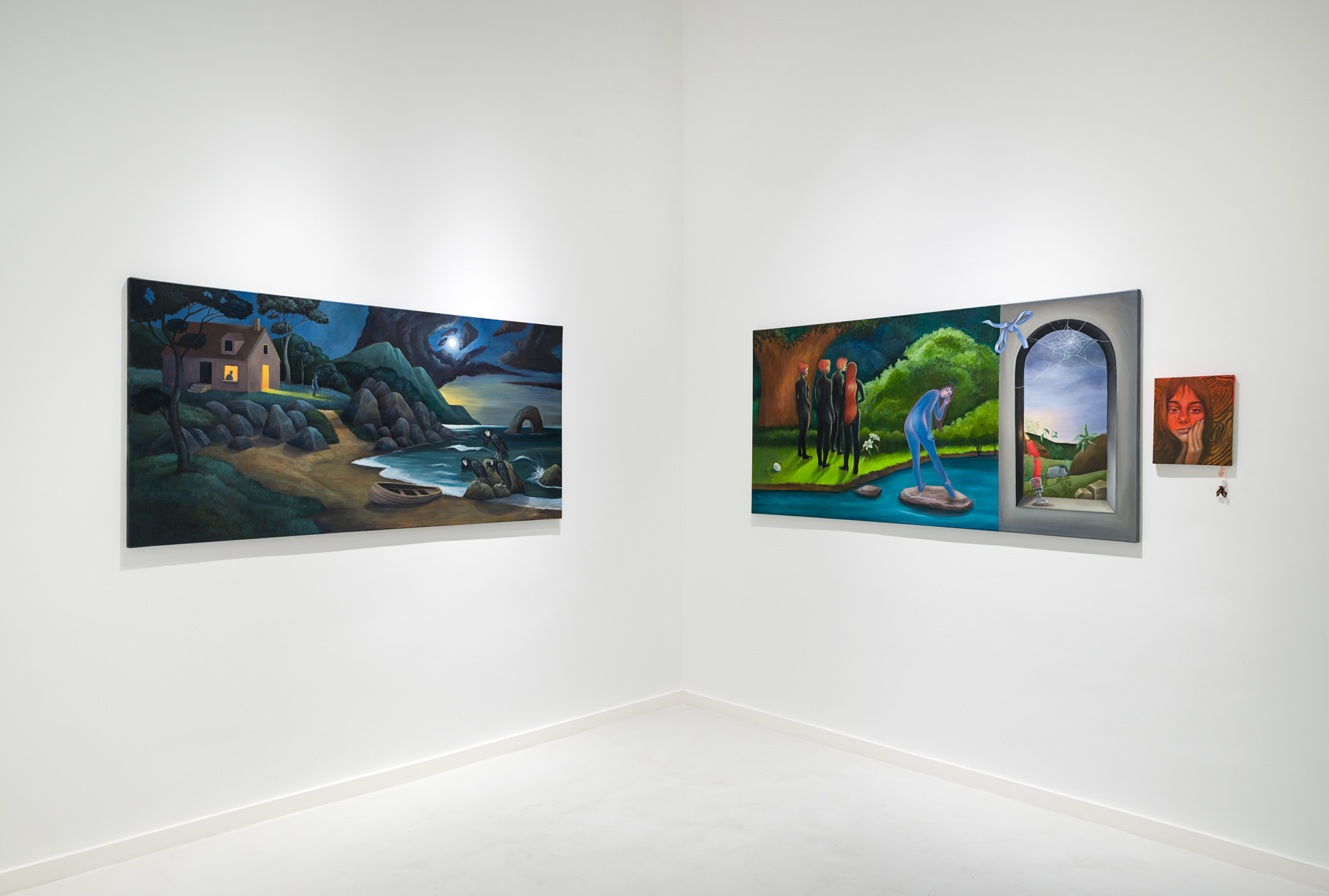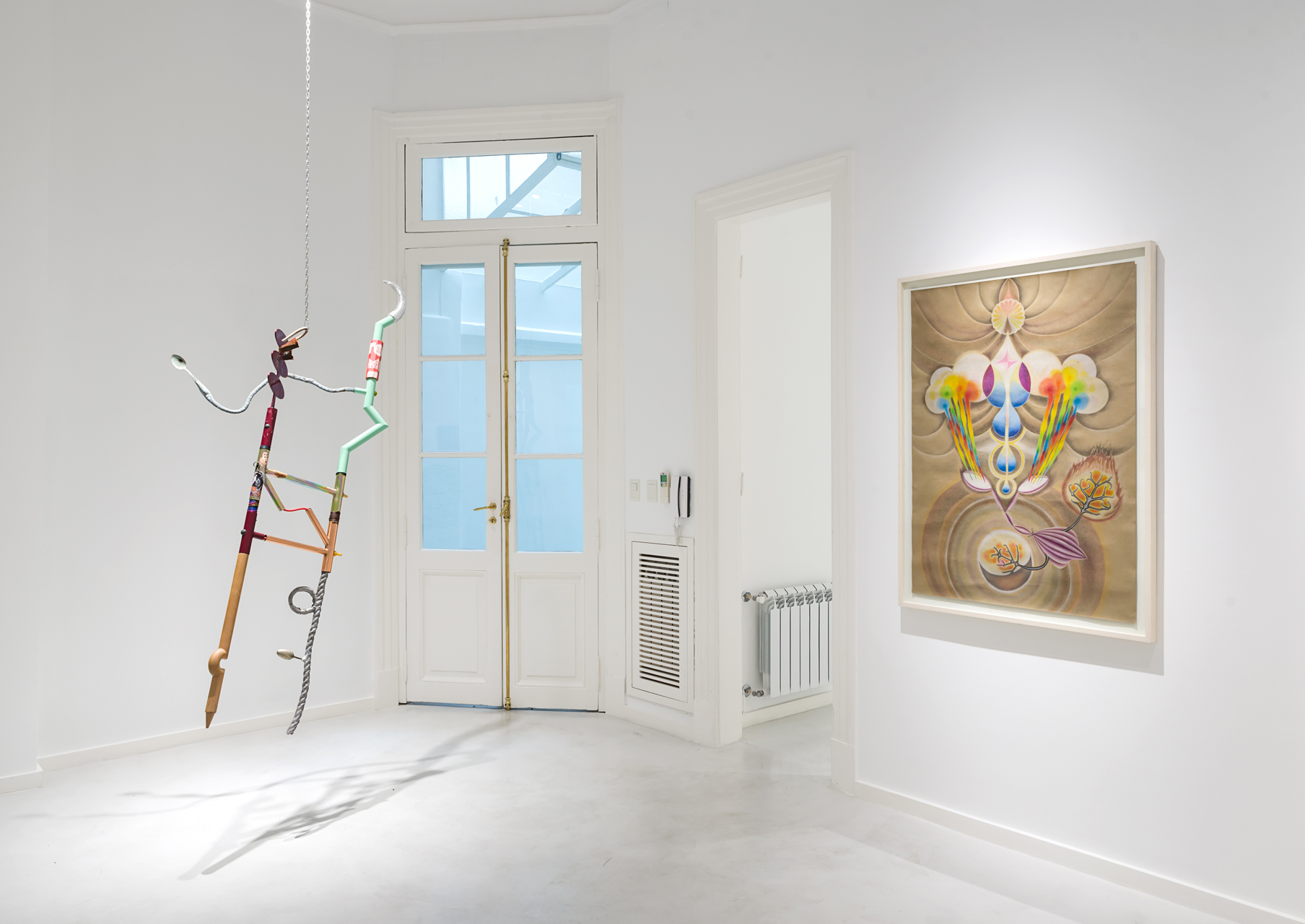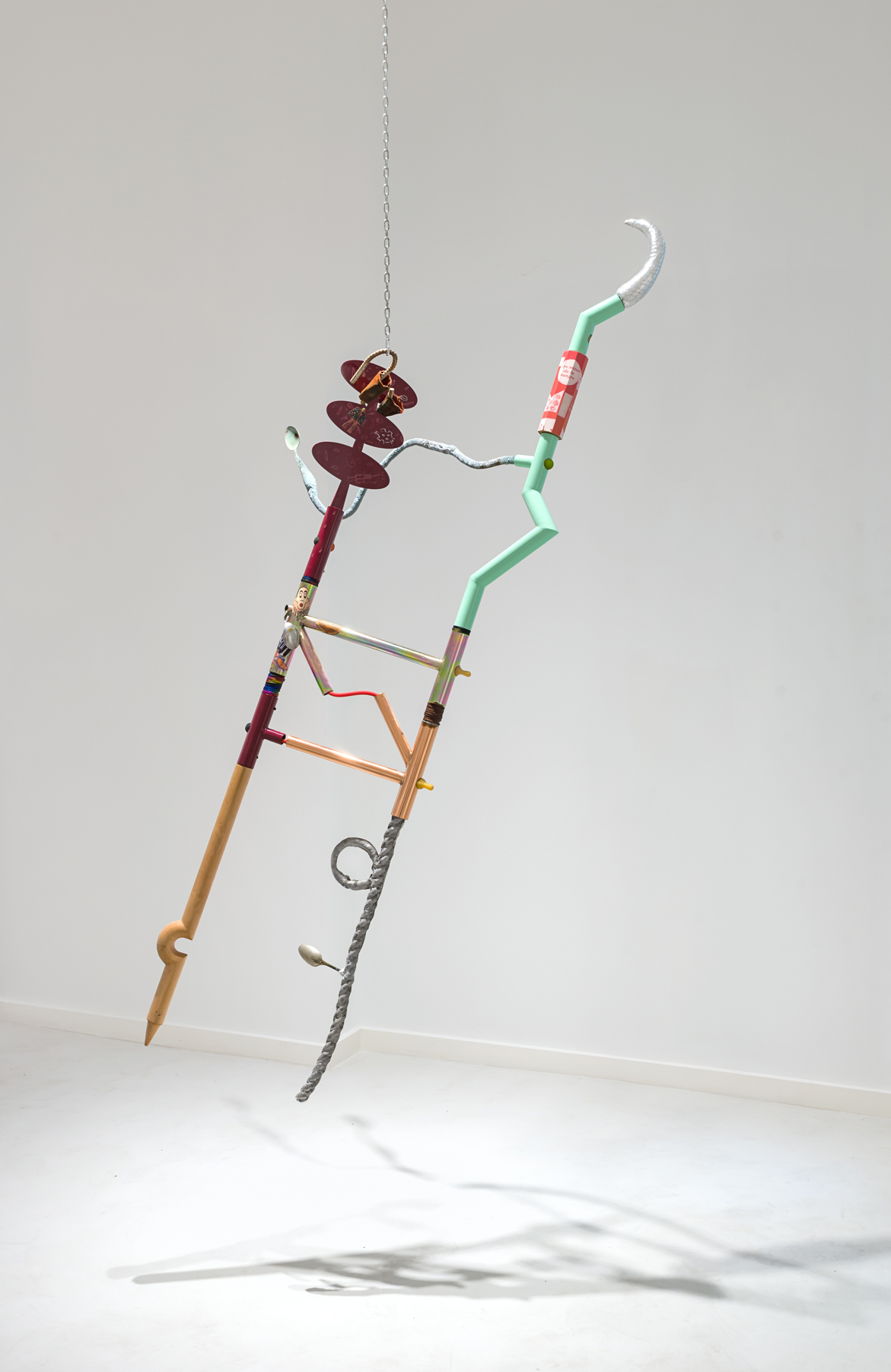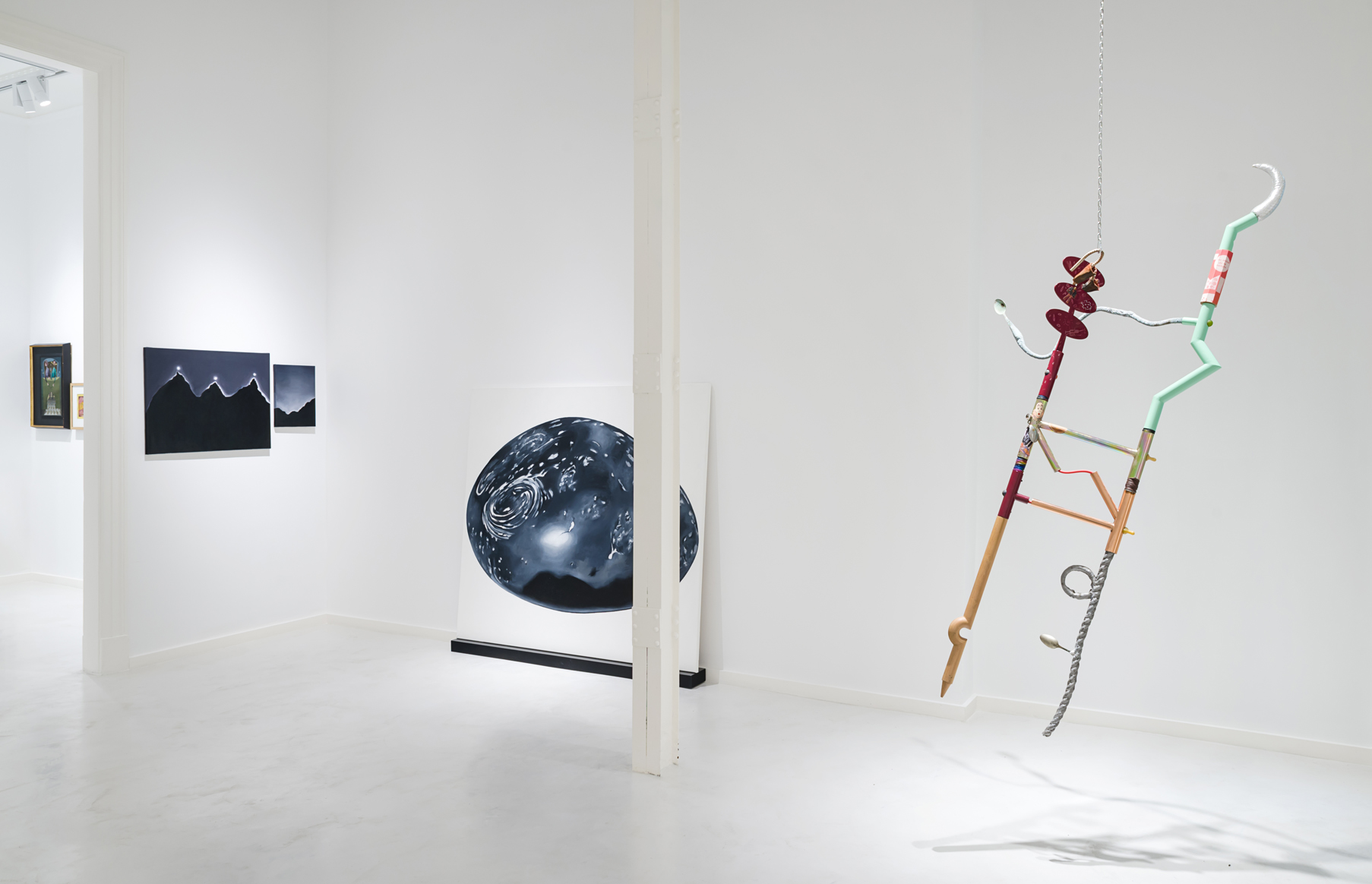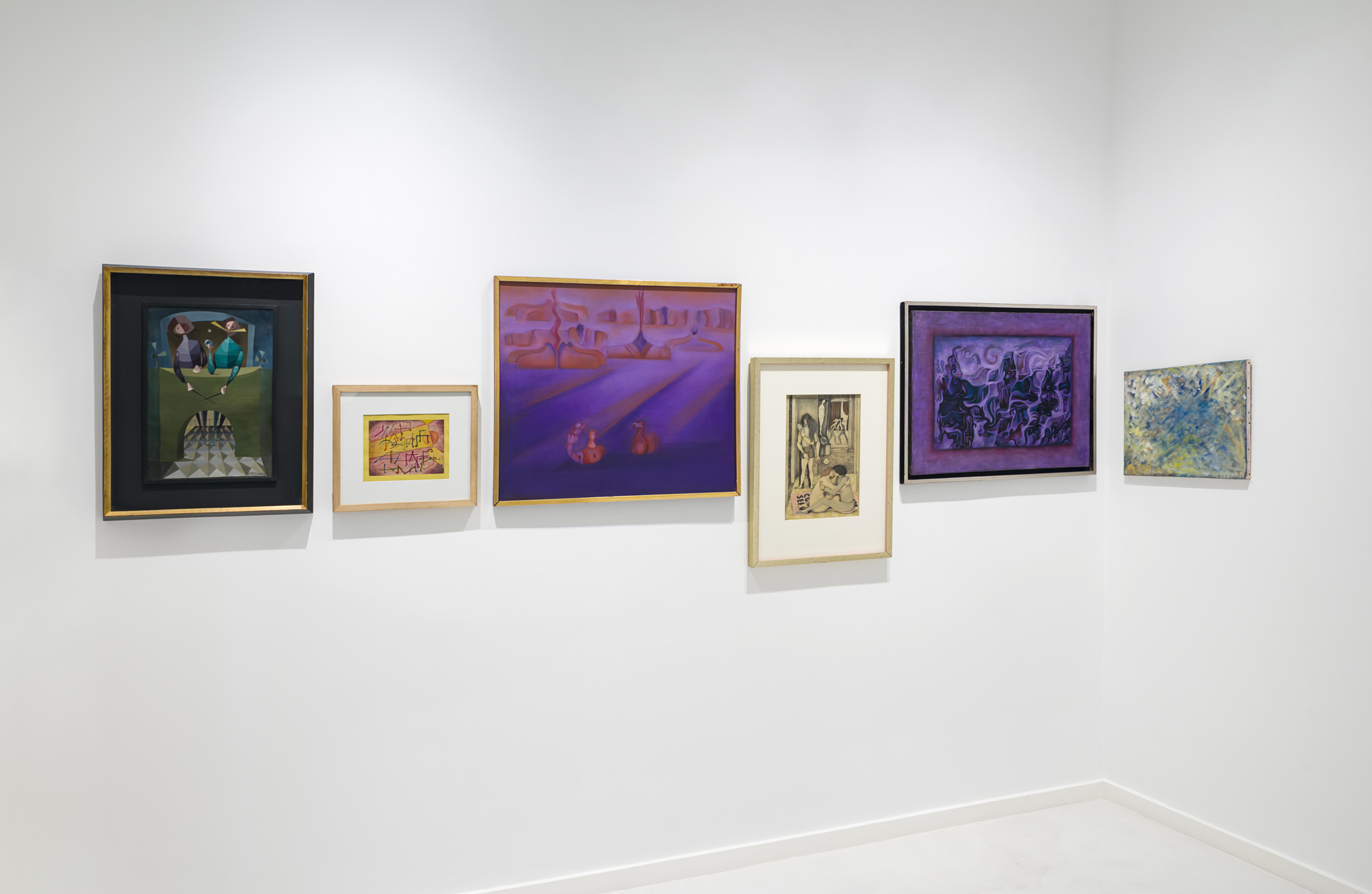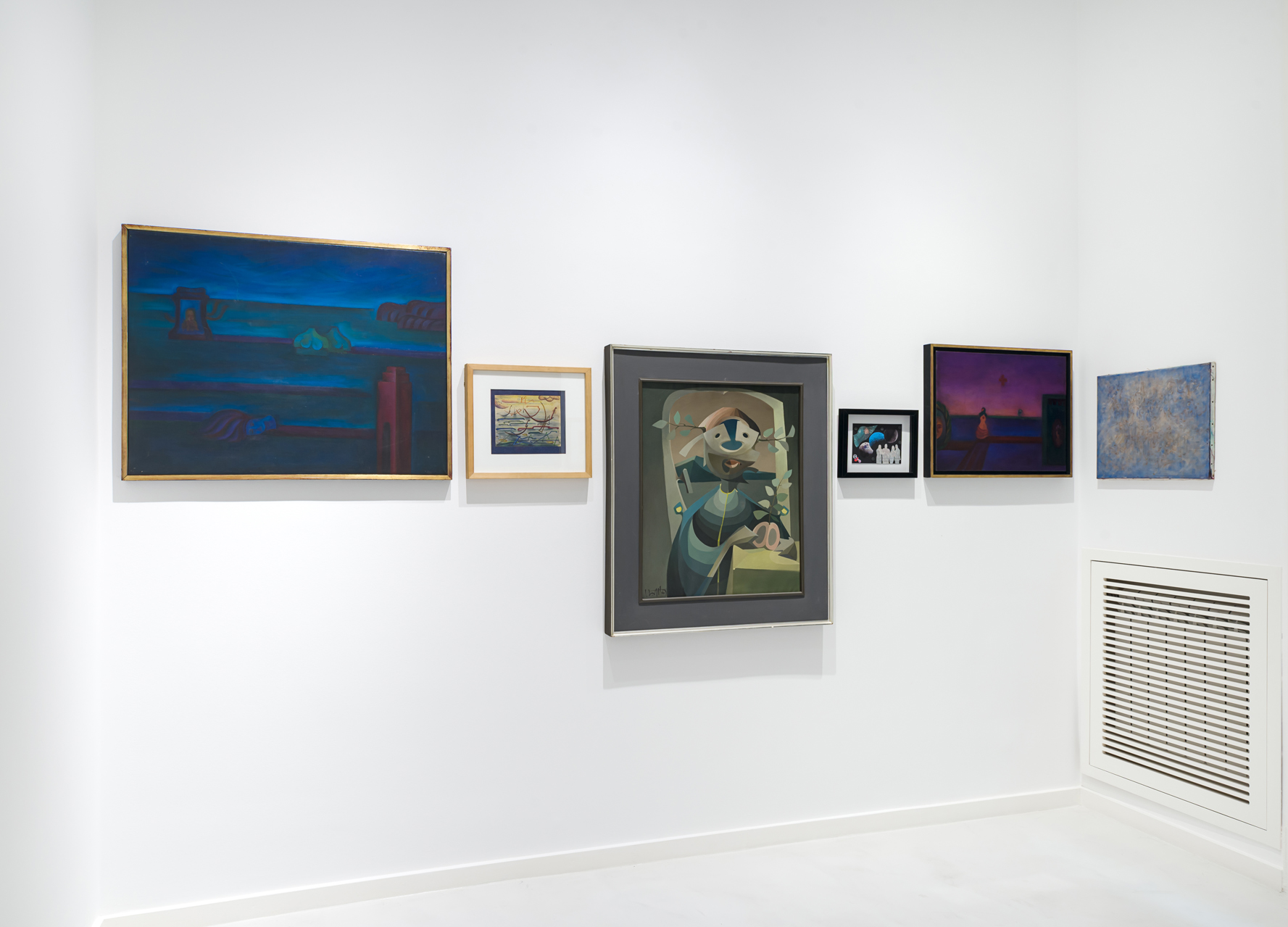Las noches blancas
June 13th - July 25th
Artists: Roberto Aizenberg, Juan Battle Planas, Marcelo Canevari, Aída Carballo, Cynthia Cohen, Sandra Guascone, Misterio Tarot (Geraldine Lanteri y Aldo Benítez), Ornella Pocetti, Xul Solar, Osias Yanov y Rosario Zorraquin.
Curator: Lara Marmor
De noche el fuego nos ilumina (1971), Los límites del sueño (1970) y Quieto diálogo del insomnio (1968) by Juana Butler (1928-2017) lead us to a universe in which everything underlies, where the unconscious glimmers, revelations take place and the occult shines. Butler opens the doors of the surreal, mystical and ecstatic night.
On the surface of his paintings can be seen the active work of the thin layer of oil that simultaneously darkens and brightens the original pigments. Butler made use of the power of the mental emancipation of surrealism and also, when painting, he knew how to go through different states of consciousness from the alteration produced by the practice of meditation.
The works of the group of artists that today give life to Las noches blancas take us away from the limits of reason. Without psychic or moral repression, they bring us closer to the encounter with productions filled with enjoyment, dance, stimulation, multisensoriality and epiphanic discoveries that rise up at night. El llamado de la noche (2024) by Marcelo Canevari, together with Las edades (2024) by Ornella Pocetti, are timeless paintings, or instead they seem to have the indeterminate temporality of dreams. The meticulous contemplation of nature and also the collection of visual information from the Internet are some of the sources that give rise to these productions, where the shift between fiction and reality is brutal. In her works, the human figure is the main character, and in his, the landscape is usually the protagonist. The painting of both, indistinctly, condenses high doses of enchantment and mystery, enchantment and sensuality. At night for Cynthia Cohen, hallucinations are real. Vivac and Vivac #2 (2023) represent the moment when the artist participates in the opening of portals in northern Argentina. A few months later, near the Antarctic end of the Earth, in Chubut, Cohen picks up a bunch of stones. It is said that Quartz cleanses impurities and that Ruby represents the strength of passion. What could be the therapeutic quality of a black faceted stone that looks like a constellation? Sandra Guascone moves with fluidity between the fields of astronomy, chemistry and biology; between life and death; light and shadow; living and non-living matter. To materialize his drawings, like Cohen, she enters into a state of sensory openness in which he receives messages, allowing herself to be traversed by that elusive thing called energy. Thus her powerful and magnetic assemblages of insects, astral matter, vegetables and animals are born.
Between 2012 and 2021, Rosario Zorraquín made a series of drawings from which she created a new alphabet based on an automatic graph. These symbols were later carved in Braille to be perceived in sessions where the guests had to decode the signs with their impressions, while the painter, medium and explorer
of matter, translated them into new paintings. Osias Yanov’s artistic practice is also crossed by the creation or resignification of symbols, many of them taken from Xul Solar (recognized by Yanov as the first cuir artist producer of languages). Desire, esotericism and collective care are some of the keys to his artistic practice made up of objects, gatherings, parties and performances.
Corazón de madera (2022) and Mitominas (2023) are assemblages where autobiographical elements are related to historical ones and in which sexual toys coexist, resignified objects such as the spoon that, against the techno-heroic imaginary of the knife or the sword, is a tool that does not prick or cut, but contains and moves.
White nights are repeated at each summer solstice in the regions near the poles. They are clear and luminous. The twilights are eternal and in them the glow intertwines with the twilight. I imagine that the music accompanying this phenomenon is that of The Poem of Ecstasy, the composition by Aleksandr Scriabin (1872-1915) about which Henry Miller wrote: It has that distant cosmic itch. Divinely fouled. All fire and air. The first time I heard it I played it over and over again (…) It was like a bath of ice, cocaine and rainbows. For weeks I was in a trance. Something had happened to me (…) Every time a thought took hold of me, a little door opened inside my chest, and there, in this comfortable little nest, sat a bird, the sweetest and tamest bird imaginable. Our own white nights also have their own music. Misterio Tarot, the duo formed by Geraldine Lanteri and Aldo Benítez, made the sound design of the room based on the personal arcana of Juana Butler, Xul Solar, Juan Batlle Planas, Roberto Aizenberg and Aída Carballo. Perhaps the visible is overrated, suggest Lanteri & Benítez, who sought the syntonic tone of our southern nights to let in the invisible, other ways of being, opening the threshold to new senses.
